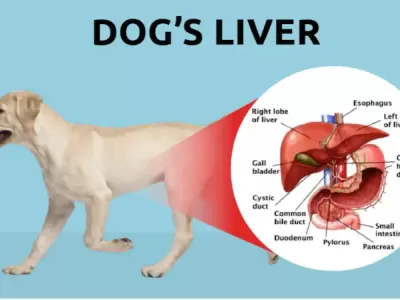Canine Patellar Luxation
The patella is the small ovoid shaped bone located at the front of the knee (stifle) joint. It is located within the tendon of the powerful quadriceps muscle and slides within a groove on the lower end of the femur, known as the femoral trochlea. Patella luxation occurs when the patella slips out of this groove.

Patella Luxation: It may occur in an inward (medial) direction, which is more common, or an outward (lateral) direction. Patella luxation is a common condition in dogs, particularly small breed dogs, and can result in pain, varying degrees of lameness and inevitably osteoarthritis within the stifle joint. The condition is traditionally seen in small breed dogs, particularly the toy and miniature breeds, however there is a growing emergence of the condition in larger breeds e.g. retrievers.
The patella is an important structure that enhances the mechanical efficiency of the quadriceps muscle and helps maintain stifle stability. When the patella slips out of its normal position, stifle stability is compromised, that may predispose to ligament (e.g. cranial cruciate ligament) damage that will add to the progression of arthritis.
The cause of a luxating patella can be as a result of trauma (uncommon) or a misalignment to the limb that occurs during development and growth that affects the whole limb (most common). It is believed that the origin of this abnormal limb development is genetic. The resulting abnormal limb alignment results in the patella being pulled out of the femoral trochlea thereby causing it to luxate, during flexion of the stifle joint.
The signs of patella luxation are variable and dependent on the grade or severity of the condition, its duration, whether it affects both limbs and whether other joint or limb problems exist. Commonly, in mild to moderate cases, owners will report an intermittent lameness, where the patient will acutely hold the limb of the ground (patella luxated), then after a few more paces, the lameness spontaneously resolves (patella relocated). In more severe cases the lameness may be continuous and the limb may appear deformed or obviously misaligned. Patella luxation has been accordingly graded into 4 grades – 1 being the mildest and 4 being the most severe form.
Patella luxation is generally diagnosed by palpation. Radiography may be used to assist in the assessment of limb alignment/deformity and the degree of osteoarthritis.
The treatment of patella luxation remains somewhat controversial but surgery is generally recommended for all cases where there is persistent lameness or if the patient is a medium-large breed. The aim of surgery is to restore normal stifle joint stability, thereby eliminating ongoing trauma to the joint surface cartilage, by realigning the quadriceps muscle mechanism. The techniques most commonly used include;
- Deepening of the femoral trochlea – referred to as a trochleoplasty procedure.
- Moving the insertion point of the quadriceps muscle on the top of the tibia (tibial crest) – known as a tibial crest transposition procedure.
- Soft tissue reconstruction procedures – release relocation and tightening procedures.
Which of the above techniques undertaken will depend on the severity of the condition and the presence of other joint problems (e.g. cranial cruciate ligament damage). Obviously the higher (more severe) the grade of the problem the greater the degree of surgical intervention that will be required.
Patients are usually in hospital for 3 days (2 nights), but this may vary depending on the type of surgery, patient’s mobility and the post-operative care arrangements at home. All patients must be strictly rested during the healing period (approx. 6 weeks). Strict confinement is recommended for the first 10days, until the surgical wound has healed. After this time, as weight bearing on the operated limb increases, a progressively increasing lead walking programme is commenced. Details of this recovery programme will be discussed at hospital discharge and further during the healing period, with the weekly revisits.
Costs for surgery vary with the type of surgery being performed. Costs include all diagnostics, anaesthesia, surgery, radiography (if required), and hospital costs for the initial procedure.
The prognosis for patella luxation surgery is generally very good, although progression of arthritis to some degree is inevitable as with all involved joint surgery (but much less than if left unaddressed). In most cases, this can be more effectively managed after the surgery due to the improved limb alignment and stability.
Many factors but most particularly the degree of pre-existing arthritis, the presence of associated ligament/joint cartilage damage and the grade of the luxation influence the prognosis.
Ongoing medical management for arthritis can include exercise, diet and weight management, formulated medications and supplements.
 Preoperative view of a dog with a medial patella luxation. Note the patella (White arrow) which is located in a displaced position. The correct position is indicated by the black arrow.
Preoperative view of a dog with a medial patella luxation. Note the patella (White arrow) which is located in a displaced position. The correct position is indicated by the black arrow.
 Postoperative view of the dog noted above with the patella now correctly seated. Note the stainless steel pins and wire implants that are used as part of the reconstruction procedure. The tendon insertion site on the top of the tibia has been cut and moved to allow realignment of the muscular mechanism. The implants maintain the corrected position of the bone.
Postoperative view of the dog noted above with the patella now correctly seated. Note the stainless steel pins and wire implants that are used as part of the reconstruction procedure. The tendon insertion site on the top of the tibia has been cut and moved to allow realignment of the muscular mechanism. The implants maintain the corrected position of the bone.



